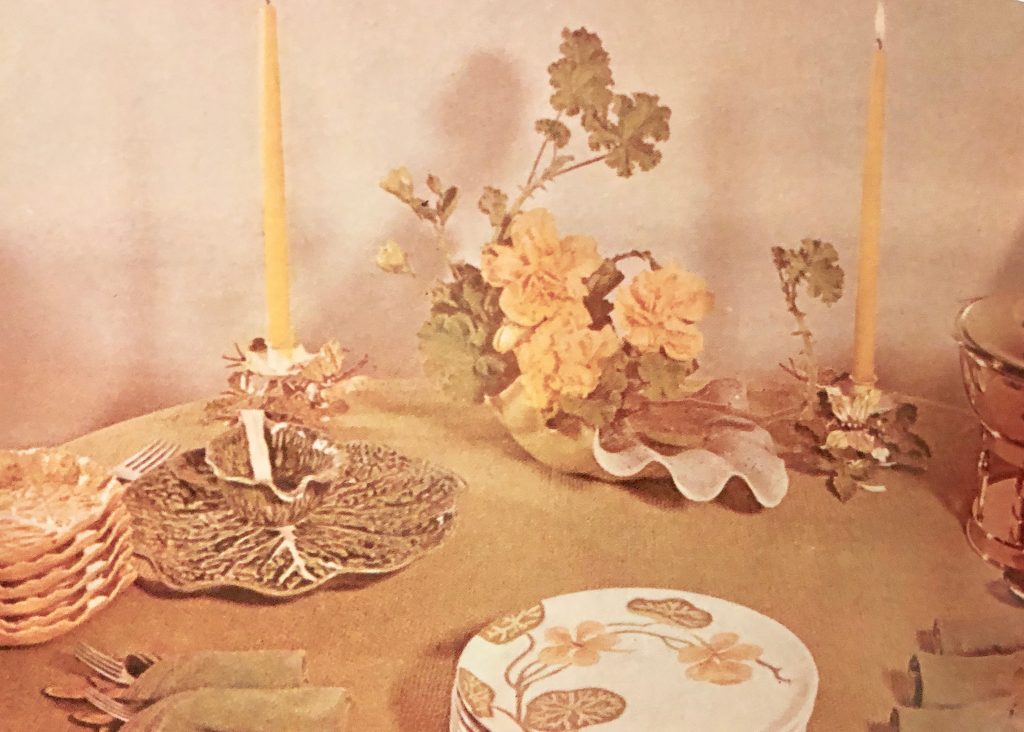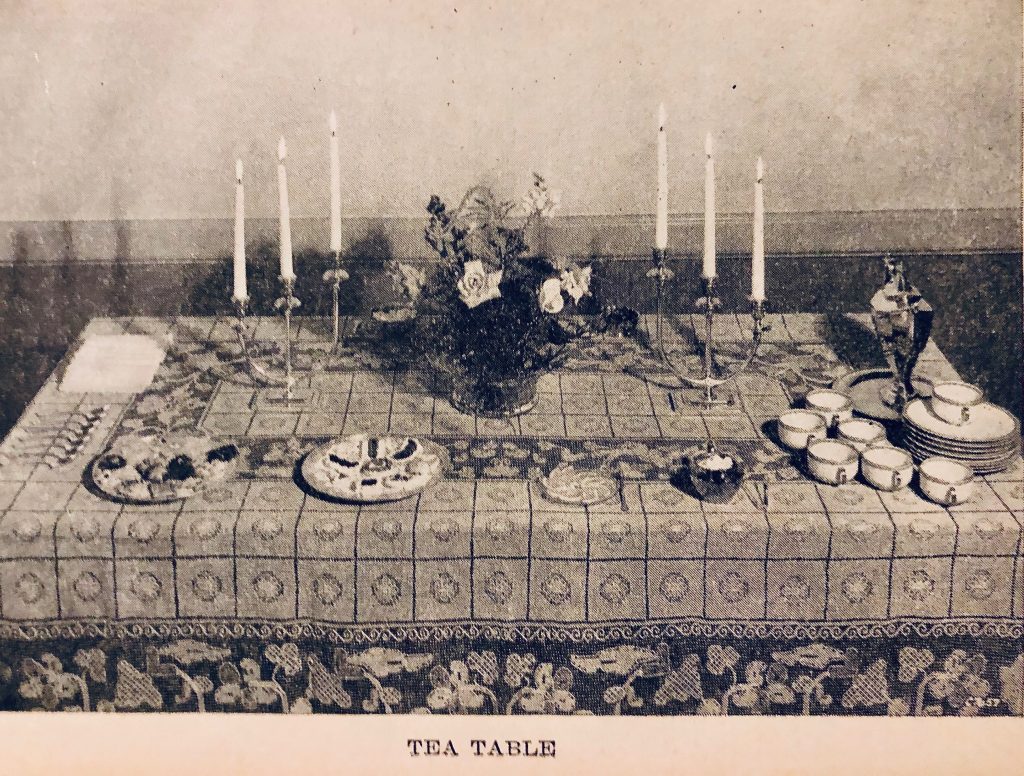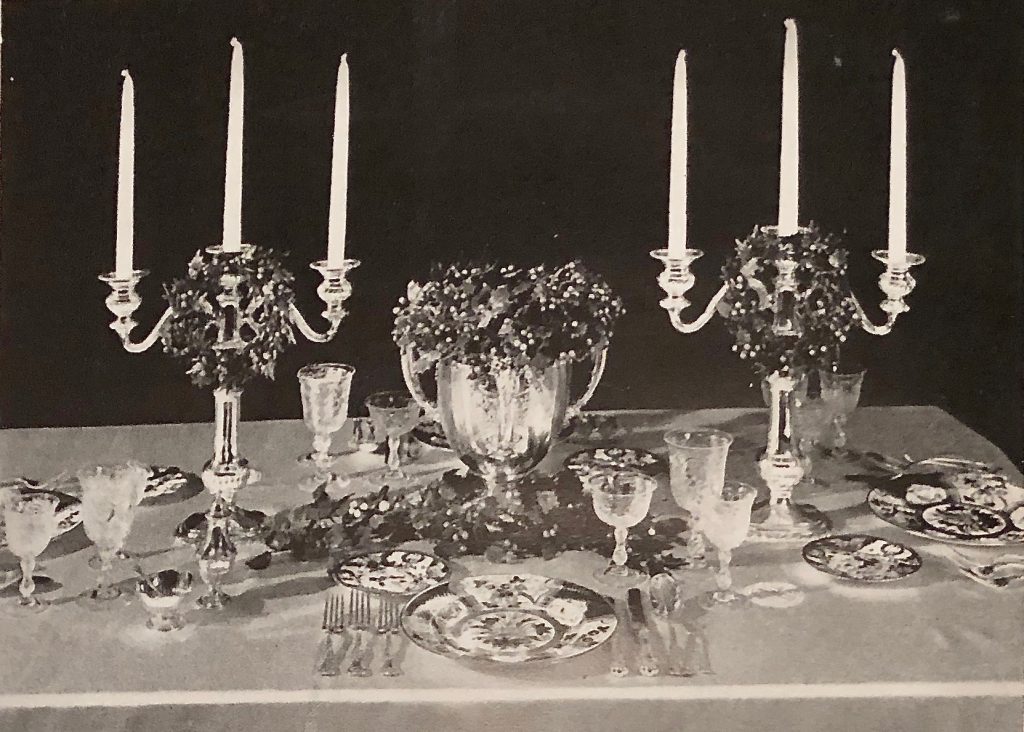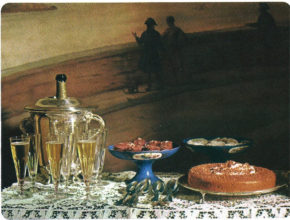“The dining-room must be quietly but well lighted. There should be no glaring lights, but a soft radiance which is so general as to make everything clear. An electric light hanging eighteen inches above the table, or a tall lamp whose light is at about the same height, either of them well shaded, are satisfactory additions to the candlelight. Sometimes high lights are dispensed with and only candles used. Candles should always be lighted three minutes before the dinner is announced. For a dinner of not more than eight covers four candles are sufficient light.”
The Etiquette of To-Day by Edith B. Ordway, 1913
This is a perfect example of how things change over time. With the advent of gas and then electric lights during the Victorian era, how you light a dinner was debated hotly.
Candles continued to be the main source of light even after gas lights were introduced, as gas hissed and could smell. No one wanted that interfering with their digestion, but even later when electricity appeared, snobs would say when you use candles, they are supposed to be the principal form of lighting. That means, no overhead lighting if you use candelabra. As you can see from the passage in Etiquette of To-Day, by 1913, combining electric lights and candlelight was considered acceptable in some quarters, (at least among the middle classes).
I’m shockingly going to agree with the snobs point of view. When you have lights on with your candles, you lose the warm glowing effect of the firelight. Why waste all that flattering golden glow? Plus, it does look a bit odd to have both. If you want, you can use a lamp here or there to supplement the lighting if candles alone leave you in the dark.
Definitely do not use electric lights and candles for a formal dinner. If it’s feasible, use candles alone. But no matter what, when it’s a formal dinner, pick one or the other. If you have to use electric, make sure you’re on a dimmer or can keep the lights from being too bright. Also consider what the lighting source looks like. A lovely electric chandelier will never seem wrong, but florescent panel lighting will detract from the meal. Nothing ruins the romance of a formal dinner quicker than seeing your dinner companions eat in HD.
As for the lighting the candles before the meal, well it follows that if candles are to be the principal lighting source for a dinner, they should be lit before the guests arrive. No tripping over the carpet or forcing people to feel their way to the table.
Now, my grandmother was adamant that candles should only be white or cream. Anything else looked preposterous to her. I’ll give her that the snobs agree. But now-a-days, unless your serving a authentically formal dinner, set the table any damn way you please. I’ve seen gorgeous tables with candles of every color, a brief stop at Pinterest will prove that.

Don’t use candles during the daytime. It’s just silly as there is no need for extra light. If your event is a formal tea where the room will go from dusk to dark, you can have the candles on the table and ready, but this is a bone of contention and some snobs may insist that no candles should be used. Snobs will also require you to pre-burn the candle wicks if you are going to light them after guests have arrived. This is actually a good tip as you don’t want to be struggling to light candles while your guests wait. Also, if you’re going to light candles in front of your guests at a nice dinner, I would suggest the long fireplace matches. You don’t want to knock over the glasses when your leaning over to light the candles and those bic candle lighters, while very convenient, look pretty sad next to your nice china.

One thing most people can agree on is no scented candles at the dinner table. You don’t want a scent competing with the smell of your heavenly cooking. Plus, some people are sensitive to the fragrances and it won’t help anyone if one of your guests is sneezing into the vegetables.

Quick tip: If you put your candles in the freezer before using them, they will drip less.
Fun vocabulary fact: a single candelabra is a candelabrum.
Much love to you and yours, Cheri


